The journey to gaining strength and muscle can take a long time. And the last thing you want is to waste months of training with little results to show for. So here are 13 signs you are getting stronger and building muscle from your weight training!
As a beginner 5 years ago, I made that exact mistake.
I spent almost half a year lifting weights with little improvement.
This article will share telltale indicators that your training is working.
They are based on my research and experience.
I’ll also share an affordable way you can increase your strength and gain muscle at home.
Let’s jump straight in.
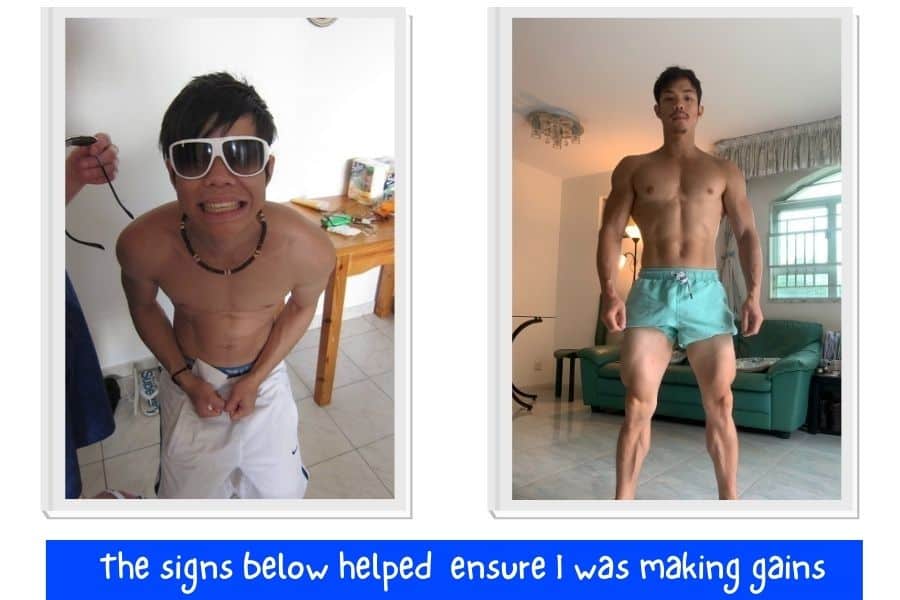
- 1) Weight Gain With Minimal Fat Gain
- 2) Reduced Muscle Soreness Between Workouts
- 3) Perceived Difficulty Of Training Decreases
- 4) Workout Durations Get Shorter
- 5) Improved Compound Lifting Form & Weight
- 6) Daily Functional Activities Become Easier
- 7) You Have A Greater Mind-Muscle Connection
- 8) Grip Strength Increases
- 9) Better Standing Posture
- 10) Increased Limb Diameter
- 11) You Get Positive Peer Feedback
- 12) Increased Appetite Even On Rest Days
- 13) Workouts Become More Enjoyable
- Cheap Ways To Get Stronger At Home
- Conclusion
1) Weight Gain With Minimal Fat Gain
Weight gain is one of the best signs that you’re getting stronger and building muscle. Muscle is dense tissue, so if you’re building muscle, you should also be getting heavier. Muscle size also correlates with strength gains- so the more muscle you have, the stronger you should be.
Weigh yourself every morning and take a weekly average- the numbers should increase.
However, you need to be careful that the gained weight is muscle and not simply fat.
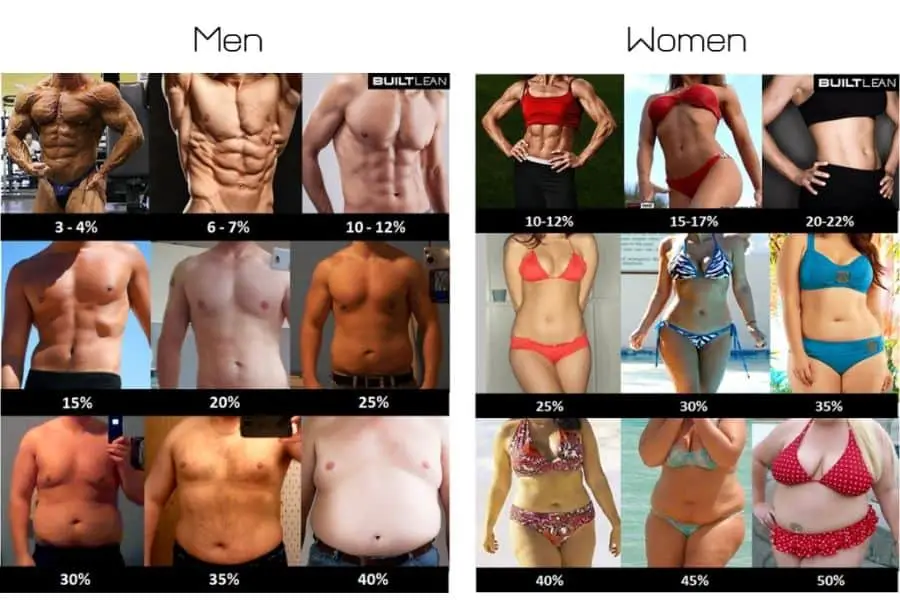
The easiest way to tell is to keep track of your body composition through body fat % tracking. Take monthly progress pics.
Your body fat gain should remain within +1 to 3% if you’re currently between 13-20% body fat, or +1 to 5% if you’re currently <12% body fat.
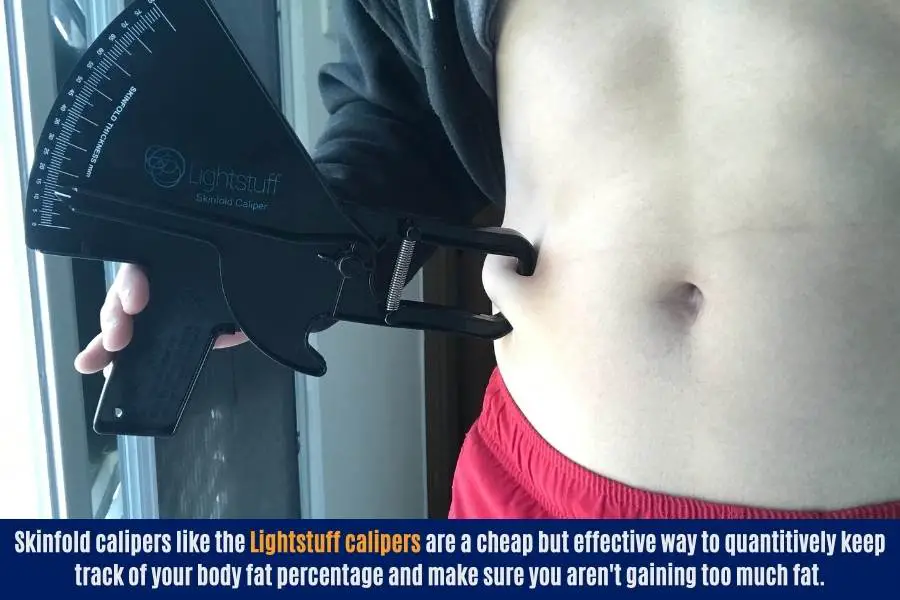
For a more objective measure, you can also get cheap body fat calipers.
Simply follow the instructions and chart to keep a record of your weekly body fat %. This method is more precise than using the above body fat chart.
Be careful with this method though- you’re weight may remain fairly constant if you’re building muscle and losing fat at the same time.
It’s best to also use the other signs below.
If you’re a skinny person who doesn’t mind putting on a bit of fat together with your muscle gains, you can check out my other post to learn how to put on 10 pounds in 1 month!
2) Reduced Muscle Soreness Between Workouts
When you first start weight training, you may notice sore muscles after every workout that peaks between 24-48 hours after the workout.
This is called delayed-onset muscle soreness (DOMS).
Why does it happen?
” Put simply- DOMS appears to be caused by exercise-induced muscle damage. And muscle damage is a contributing factor to muscle growth.”
Will Levy, Strength Coach, Breaking Muscle.
When you’re muscles are getting bigger and stronger, you’ll begin to feel DOMs to a lesser degree (for a given workout intensity).
Here, you’re effectively “feeling” you’re muscles get stronger.
3) Perceived Difficulty Of Training Decreases
The Borg rating of perceived exertion (RPE) is a way to self-analyze how much effort you’re putting into your weight training workouts.
Here’s a Borg RPE modified for weight lifting
| Rating | Perceived Exertion | Description |
|---|---|---|
| 1 | Rest | How it feels laying or sitting down |
| 2 | Extremely light | Able to do 20+ reps in a set with minimal effort |
| 3 | Very light | Able to do 15+ reps in a set with little effort |
| 4 | Light | Warm-up sets, able to hold a conversation comfortably |
| 5 | Moderate | Can do 5 more reps after a set, light breathing & sweating |
| 6 | Somewhat-hard | Can do 4 more reps after a set, moderate breathing & sweating |
| 7 | Hard | Can do 3 more reps after a set, ~70% of 1RM, moderately heavy breathing & sweating |
| 8 | Very hard | Cando 2 more reps after a set, ~75% of 1RM, heavy breathing & sweating |
| 9 | Extremely hard | Can do 1 more rep after a set, ~85% of 1RM, hard to hold a conversation. |
| 10 | Maximum exertion | Impossible to do more sets, reps, or weight, difficulty speaking after a set. |
If the perceived difficulty of a workout is getting lower for a given workload, then this is a good indicator that you’re getting stronger and building muscle.
However, you need to make sure that you’re taking RPE measurements from workouts that have the same workload.
A common mistake to make is to think you’re getting stronger because your RPE is lower when in reality you’re just lifting lighter weights or doing less work in general.
4) Workout Durations Get Shorter
If you’re getting stronger and you’re RPE is reducing, then chances are your workout durations will also begin to get shorter.
In other words, it takes you less time to complete all your sets.
This comes as a result of decreased rest times. It’s a good indication that you’re muscles are getting stronger and your overall capacity to exert physical work is increasing.
When this happens, you should start to increase the intensity again by adding weight to your lifts.
You might also be interested in my other article to find out the fastest and slowest muscles to build!
5) Improved Compound Lifting Form & Weight
The 5 main compound lifts include:
- Bench press.
- Overhead shoulder press.
- Row (or pull up).
- Barbell squat.
- Barbell deadlift.
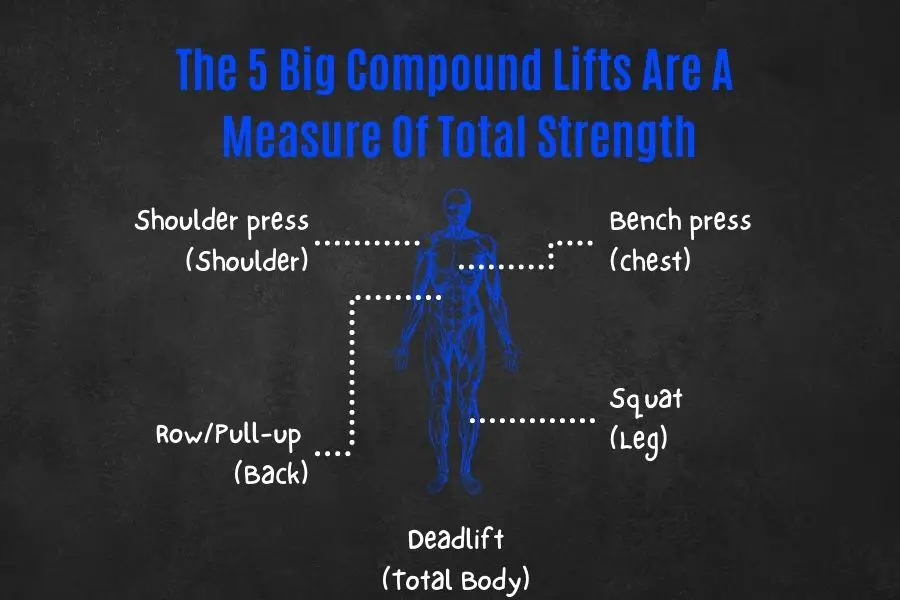
These exercises combined will test your whole-body pushing and pulling power (i.e. total body strength).
Keep a simple training journal (smartphone notes work well). If your numbers are increasing every week, then this is a surefire sign that you’re getting stronger and gaining muscle.
Numbers to track include weight, reps, and sets.
Similarly, if you’re able to do these exercises with better form, then this is a good indicator that you’re primary drivers and stabilizer muscles are gaining strength.
A good way to measure form is to video record your lifts on your phone.
6) Daily Functional Activities Become Easier
The compound lifts detailed above are what are called “functional exercises”.
This means the movements replicate daily physical movements like pushing, pulling, and lifting.
So getting stronger on these lifts is a good sign that you are getting stronger in general.
Here are some functional activities that indicate body strength:
| Compound Movement | Example Activity |
|---|---|
| Bench press or push up | Pushing a door open. |
| Shoulder press | Stacking an object onto an overhead shelf. |
| Row or pull up | Pulling a door open. |
| Squat | Stair-climbing & lifting objects off the ground. |
| Deadlift | Lifting any object off the floor. |
This is a highly subjective method to measure strength gains though. So make sure you combine it with the other methods in this article!
7) You Have A Greater Mind-Muscle Connection
When you’re muscles grow bigger and you become stronger, you will also develop a greater mind-muscle connection.
“The stronger the mind-muscle connection, the more muscle fibers you will recruit, and the stronger the muscle contraction”
Brent McGrath, Bodybuilder.
A good way to test your mind-muscle connection is to try time-under-tension raining.
This requires you to prolong the upward and downward phases of each lift.
For a dumbbell bench press example: count for 2 seconds on the upward phase and 4 seconds on the downward phase.
How effectively can you do this?
The stronger you’re mind-muscle connection, the stronger you are, and the easier it will be to practice TUT. Likewise, TUT training is a great way to build a stronger mind-muscle connection, gain strength, and increase muscle size.
If you’re struggling to make any gains, you can check out more tips in my complete guide to gaining you’re first 10 pounds here.
8) Grip Strength Increases
Grip strength shows a strong correlation to overall body strength.
Think about it:
For you to lift heavier weights, you need to be able to hold that weight in your hands right?
“When you’re grip strength increases, you’ll likely find your overal strength level also increases”
Jeff Cavaliere, C.S.C.S Strength Coach, Athlean-X.
Grip strength is also a good measure for you’re neurological strength– the ability of your central nervous system to send the signals for muscle activation. A stronger nervous system leads to stronger muscle contractions.
Grip strength is traditionally measured with a dynamometer. But this is overkill for the average Joe.
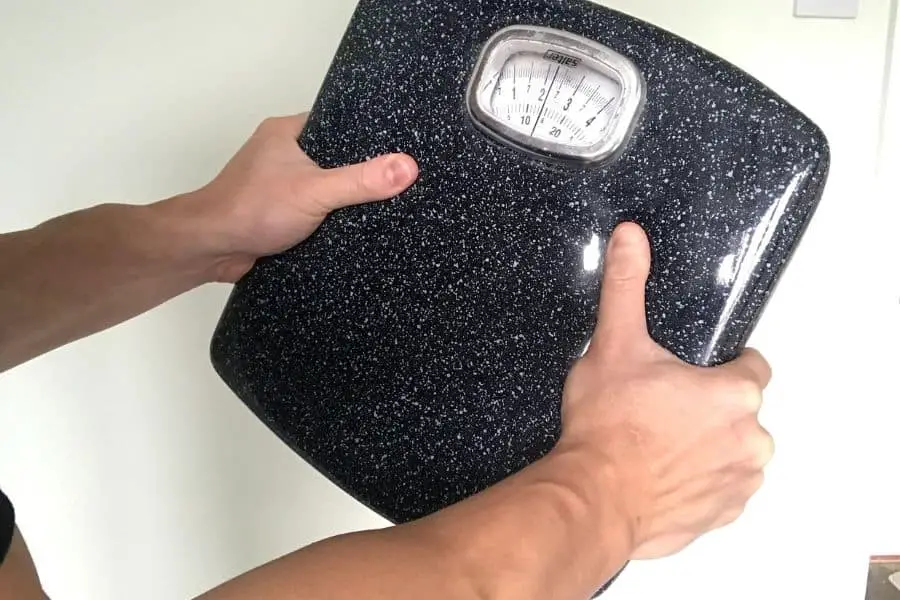
You can use a simple bodyweight scale instead. Simply hold the scale in both hands, squeeze, and record the figure. Do this every month.
It won’t give you a definitive measure of grip strength, but it will be able to show positive or negative trends (i.e. if you’re getting stronger or weaker).
You can also use the scale to keep track of weight gain as a result of muscle gains (see point 1).
9) Better Standing Posture
A good weight training program targets all muscles in the body including the chest and back.
If you’re new to weight training, then you should notice your posture improve within a month of training. Posture should then continue improving until the ~3-6 month mark.
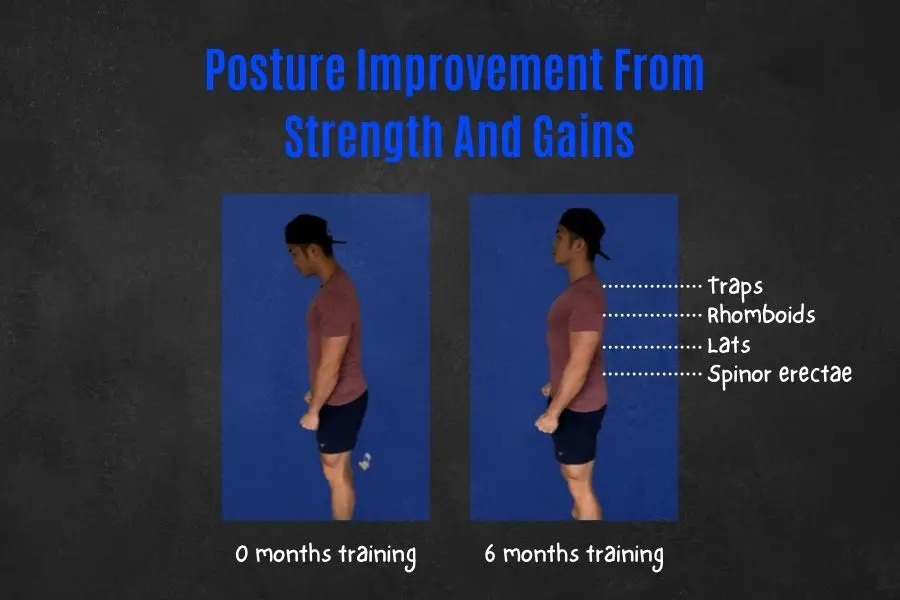
This is a result of your pectoral, trapezius, rhomboids, latissimus dorsi, and spinor erectae getting stronger and retracting your upper torso upwards.
Take monthly comparison photos to keep track of your posture.
10) Increased Limb Diameter
This is one of my favorite indicators of strength and muscle gains.
Your clothes will begin to fit differently in a positive way. You may even need to upgrade T-size from an M to L!
A more objective method to measure limb diameter of course is to take body measurements in the:
- Bicep.
- Chest
- Upper thigh.
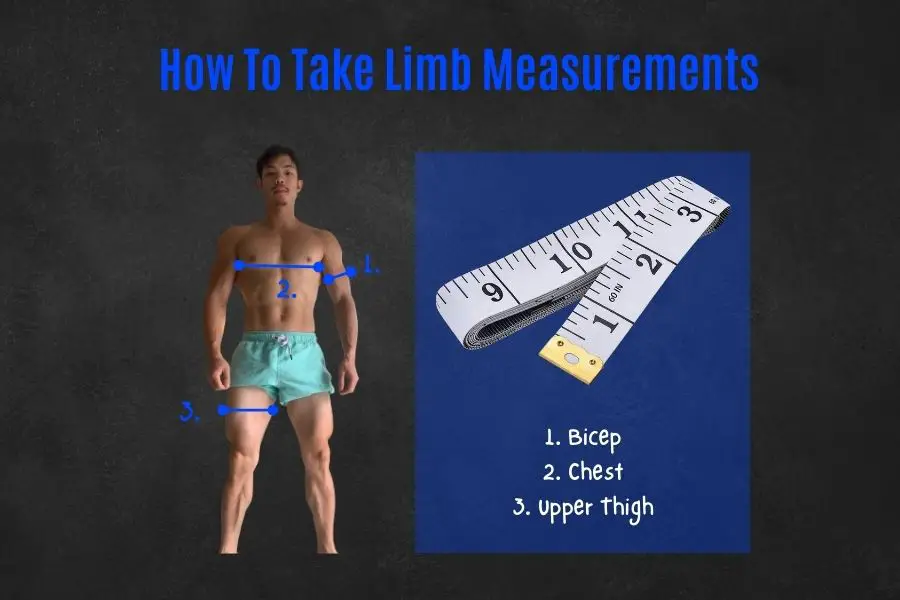
Take monthly measurements. If your numbers are increasing, then this is a good sign you’re training is producing positive results.
You’ll need a flexible tape measure. They can be delivered quickly and cheaply from Amazon.
However, this method doesn’t differentiate between fat and muscle gains. So it’s important to combine this data with the other signs in this article.
The chest is often one of the harder muscles to build. Check out my other article for reasons you’re pecs aren’t getting stronger.
11) You Get Positive Peer Feedback
It can take up to a month to notice the first visible signs of strength and muscle gains, and up to 3 months to notice significant changes. This time delay comes as a result of the repeated muscle breakdown and repair cycles required for muscle hypertrophy.
Hypertrophy is the fancy name for muscle growth.
When the hypertrophy process occurs in such small increments, it can be difficult to notice the improvements since you see yourself in the mirror every day.
Chances are others will notice way before you do.
So if you get positive comments from friends and family, then this is a sign that you’re getting stronger and bigger.
12) Increased Appetite Even On Rest Days
A 2019 study suggests muscle mass correlates positively with appetite.
In other words- the more muscle you have the higher your appetite.
This makes sense since muscle is metabolically active tissue, meaning it consumes energy even at rest.
Therefore a higher amount of muscle mass leads to a higher metabolism.
So if you find yourself eating more food and being more ravenous in general even on non-training days, then this could be a sign that you’ve added some serious muscle onto your frame!
13) Workouts Become More Enjoyable
As you build more muscle and gain more strength, it’s not uncommon to find yourself in a positive feedback loop.
In other words, the more muscle you build, the more you’ll want to continue building.
As such, you’ll probably find your workouts becoming more enjoyable the stronger you get.
Signs of more enjoyable workouts include:
- Wanting to beat your 1-rep max and personal records.
- Making more time for workouts.
- Progressive overloading frequently (adding weight, reps, or sets every couple of weeks).
In contrast, the early stages of training may not be that enjoyable since you’re still practicing your technique and you may be affected by post-workout muscle soreness.
Cheap Ways To Get Stronger At Home
You may have already noticed some of the signs that you are getting stronger. But what if you want to drive further strength gains?
To cap things off, here’s a gear recommendation list I used to build strength at home:
1) Heavy adjustable dumbbells.
In an ideal world, a full barbell and rack setup is the best way to increase strength at home. But cost and space restrictions mean it’s not feasible for many of us.
A pair of heavy adjustable dumbbells are the next best thing.
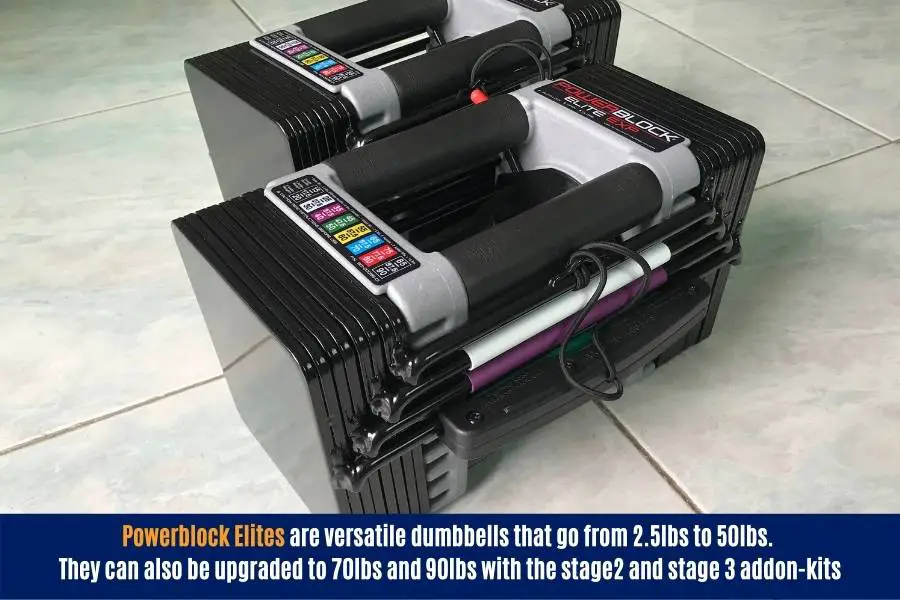
I use and recommend the Powerblock Elite series. You can see my hands-on testing review here.
Each dumbbell weighs 50lbs and can be upgraded to a massive 70/90lbs using the addon kits, as your strength increases (means you don’t have to splash out $500+ in one go).
This is more than enough weight for beginners/intermediates to build a solid strength foundation at home.
The Poweblocks are physically hard-wearing, intuitive to use, and come with a 5-year warranty (best in the industry).
If you’re from the UK, then the Powerblock Pro Series will be cheaper for you.
And if you’re on a tight budget, then the Yes4All spinlock dumbbells are a much cheaper option.
Just be aware that spinlock dumbbells are more cumbersome to use and lead to longer workouts.
You can check out my other article to learn how to build muscle at home with dumbbells.
2) Adjustable weight bench.
A weight bench is a cheap way to maximize the variety and effectiveness of your dumbbell workouts.
It’s essential for building a stronger upper body (chest, back, and core).

I use and recommend the Flybird FB149 adjustable weight bench.
It goes perfectly with the Powerblocks to build muscle and strength at home.
The 7x FID settings mean you can target all areas of the body for total-body gains.
It’s ideal for people between 5’7″ to 6’0″.
You can find my full Flybird bench review here.
If you fall outside this height range, then the Fitness Reality adjustable weight bench. dimensions will be more comfortable for you.
3) Resistance bands.
Resistance bands are a cheap and effective way to practice TUT strength training, as per “signs you are getting stronger” point 7.
All dumbbell/barbell moves can be replicated with bands (James Grage’s Youtube channel has a comprehensive exercise tutorial).
As the bands stretch, the resistance increases (you can learn all about how resistance bands work in my other article).
This makes them highly effective for TUT for beginners to advanced lifters alike.
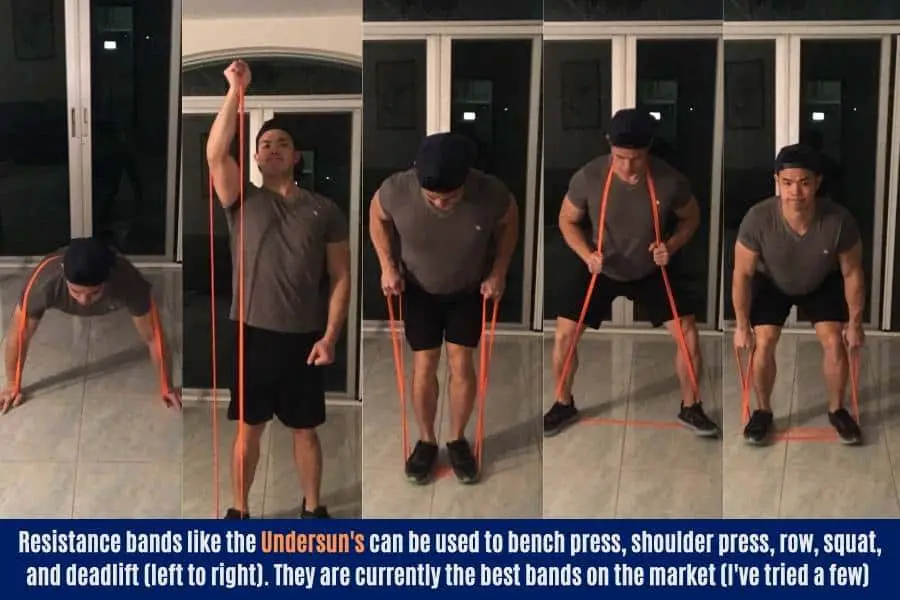
I use and recommend the Undersun Fitness bands.
Having had multiple sets of cheap bands snap on me in the past, I can honestly say the Undersuns are well worth their slightly higher price tag. They come with a lifetime warranty, unlike the other brands.

You’ll also need a pair of gloves to prevent friction burns.
Gloves don’t have to be expensive- the Ihuan ventilated neoprene gym gloves do the job perfectly well.
4) Protein powder.
To build strength and muscle, you also need to eat right.
More specifically- you need at least 1g of protein and a 5-15% caloric surplus every day.
If you lead a busy lifestyle or simply have a low appetite, then protein powders are extremely beneficial.

I use and recommend the MyProtein Impact Whey.
Each serving contains 21g of protein and 100 calories.
The MyVegan Pea Protein is a good alternative for plant-eaters.
Regarding the cost per serving, it’s one of the cheapest sources of protein you can get.
If you’re very skinny (<12% body fat), then the Optimum Nutrition Serious Mass may be a better option.
It’s slightly pricier, but each scoop contains 50g of protein and 1250 calories.
I also add a scoop of MyProtein Creatine Monohydrate to supercharge my workouts.
Creatine is a naturally occurring molecule that’s found in low concentrations in all our muscles where it helps with power production.
The supplement simply tops up your natural creatine levels.
If you rather stay away from powder, you can check out my homemade mass gainer shakes here.
5) Body calipers.
Lightstuff calipers, as per “signs you are getting stronger” point 1.
6) Body scales.
Fitindex Bluetooth scale, as per “signs you are getting stronger” points 1 and 8.
7) Tape measure.
Amazon soft tape measure, as per “signs you are getting stronger” point 10
Conclusion
Those are 13 signs that you are getting stronger and building muscle.
The more signs you see happening, the more likely you’re effectively gaining strength and muscle from your training.
I’ve also included an affordable equipment list to help you make strength gains at home!
How many of these signs do YOU see?
Let me know in the comments below!
Thanks for reading guys!
Peace Out,
Kal
(Biochemistry BSc, Biomedical Sciences MSc, Ex-Skinny Guy)

